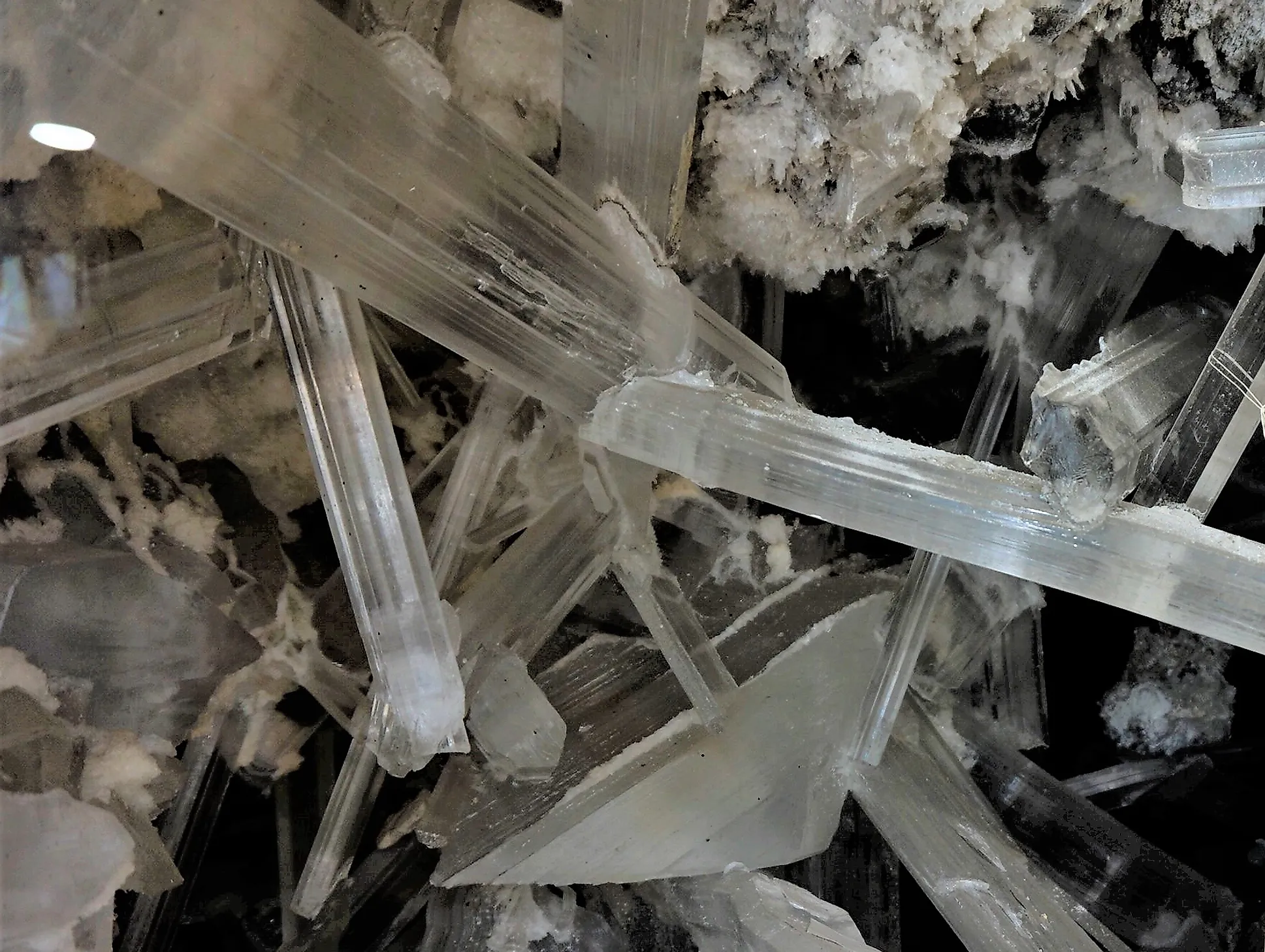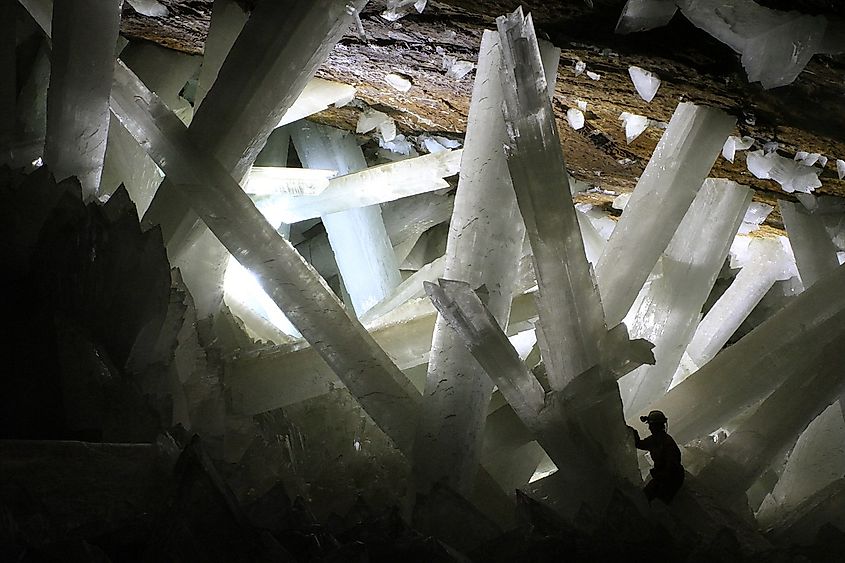
Cave Of The Crystals
The Giant Crystal Cave, also known as the Cave of the Crystals, is a horse-shaped cave beneath the Sierra de Naica in Chihuahua, Mexico. The cave was discovered in 2000 by miners who were drilling for fresh ore deposits. This cavity in a limestone rock is roughly 109 meters long and 10 meters wide and connects to the Naica Mine. Its volume is about 5,000-6,000 cubic meters. Although the cavity is referred to as the “Cave of the Crystals,” it comprises three different interconnected caves, with one much larger than the other two. The cave is home to large selenite crystals, with the largest measuring over 11 meters.
Where Is The Cave Of The Crystals?
The Giant Crystal Cave is located below the Sierra de Naica, a mountain in Naica, southern Saucillo Municipality, Chihuahua, Mexico. The gigantic cavern is connected to the Naica Mine within the same locality at a depth of about 300 meters. Besides the Cave of the Crystals, there are several other caves below this mountain filled with crystals. However, the crystals in these chambers are not as massive. These caves include the Cave of Swords, which contains shorter gypsum crystals, and the Ice Palace, discovered in 2009. The mountain above the Cave of the Crystal is rich in silver, lead, and zinc deposits. Beneath the cave is a magma chamber that can rise to the Earth’s core. The cave is too dangerous because of the extreme temperature (averaging 58 degrees Celsius) and is currently closed to the public, with only employees and scientists allowed access to the area.
Crystal Formation

The cave’s main contents are the white-tinted gypsum crystals jutting from every direction, including floor, wall, and ceiling. Some of these crystals are so tall, nearly 12 meters, that they would make perfect telephone poles. The largest beam is 11.4 meters tall, 1 meter wide, and weighs about 11,000 kilograms. Several researchers, including Juan Garcia-Ruiz, have endured the cave’s extremely harsh conditions to investigate the origin and growth of these crystals.
About 26 million years ago, the magma chamber beneath Naica released its content onto the Earth's surface and formed the mountain near the town. The rising magma also forced mineral-rich, hot water into the gaps and caverns in the limestone rocks that formed part of the mountain. The hot water, containing sulfide ions, came into contact with cold, oxygenated water on the surface, but the two sets of waters did not mix due to density differences. However, the oxygen in the cold water oxidized the sulfide ions and formed calcium sulfate. Although calcium sulfate could form different minerals at different temperatures, it formed gypsum crystals known as selenite crystals when the temperature fell below 56 degrees Celcius. The crystals formed and grew steadily over 500,000 years. The magma chamber is located about 3-5 kilometers beneath the cave.
Discovery And Exploration Of The Cave Of The Crystals
Although the Naica Mine was worked for decades, the Cave of the Crystals was only discovered in 2000 by two miners while drilling the Naica fault for silver deposits. The two brothers, Pedro and Juan Sanchez, believed to be twins, worked for Industrias Penoles. In the same year, two more caves were also discovered in the area and named Candle Cave and Queen’s Eye Cave. The Cave of Sword, located about 120 meters above the Giant Crystal Cave, was also discovered by miners in 1910.
The Cave of the Crystals has been explored since its discovery in April 2000. However, a comprehensive exploration was conducted in 2006 by a team of scientists led by Paolo Forti. The team wore refrigerated suits and caving overalls to counter the extremely hot temperature and used Sinusit respirators to aid their breathing while in the cave. The scientific team, comprising mineralogists, crystallographers, and biologists, determined the crystals’ maximum age as 500,000 years. The team also determined the growth rate as 0.000012-000016 Newton-meters per second.











